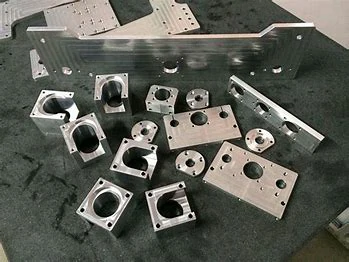Title: Precision Machining Aluminum Alloy Optical Fiber Module Boxes: Tool Selection, Depth, Step Distance, Feed, and Speed
Introduction:
Aluminum alloy optical fiber module boxes are critical components in the telecommunications industry, requiring precise and efficient machining processes. Choosing the right tools, determining the optimal cutting parameters, and ensuring proper feed and speed are crucial for achieving high-quality results. In this article, we will explore the key factors to consider when milling aluminum for the production of these module boxes.
Tool Selection:
Selecting the appropriate tool is essential for machining aluminum alloy optical fiber module boxes. Carbide end mills are commonly used due to their exceptional hardness and wear resistance. The choice of tool diameter depends on the desired precision and surface finish. Smaller diameters provide higher accuracy, while larger diameters offer faster material removal rates. It is recommended to use multiple-flute end mills to increase chip evacuation efficiency.
Depth of Cut:
Determining the depth of cut involves calculating the maximum amount of material that can be removed in a single pass without compromising the tool’s stability or causing excessive tool wear. A shallow depth of cut is generally preferred, particularly when machining complex geometries or delicate features. This ensures better control over cutting forces, minimizes vibration, and enhances tool life.
Step Distance:
The step distance, also known as the axial depth of cut, determines the distance between each cutting pass. It affects machining efficiency, surface roughness, and tool life. A smaller step distance decreases the load on the tool, thus reducing the risk of tool breakage and improving surface quality. However, excessively small step distances may lead to increased machining time. Experimentation and balancing between productivity and surface finish must be conducted to find the optimal value.
Feed Rate:
The feed rate, also referred to as the cutting speed, represents the linear speed at which the tool moves through the workpiece. Choosing the appropriate feed rate is crucial for maintaining machining efficiency while preventing excessive tool wear. Higher feed rates lead to increased productivity, but they must be balanced with the machine’s capabilities and the workpiece’s material properties. It is recommended to start with conservative feed rates and gradually increase them while observing the resulting surface finish.
Speed:
The rotational speed of the cutting tool, known as the spindle speed, directly affects the machining process’s efficiency and the tool’s longevity. For aluminum machining, higher spindle speeds are generally preferred due to the material’s low thermal conductivity. However, care must be taken not to exceed the tool’s recommended limits to avoid premature tool failure. Correctly adjusting the spindle speed based on the tool’s diameter, tooth geometry, and cutting conditions ensures optimal chip evacuation and temperature control.
Conclusion:
When milling aluminum alloy optical fiber module boxes, careful consideration must be given to tool selection, depth of cut, step distance, feed rate, and spindle speed. Choosing the right tools, determining appropriate cutting parameters, and balancing productivity with surface finish requirements are crucial for achieving high-quality results. By implementing these guidelines, manufacturers can optimize their machining processes and produce aluminum alloy optical fiber module boxes that meet the industry’s demands for precision and reliability.
.webp)



